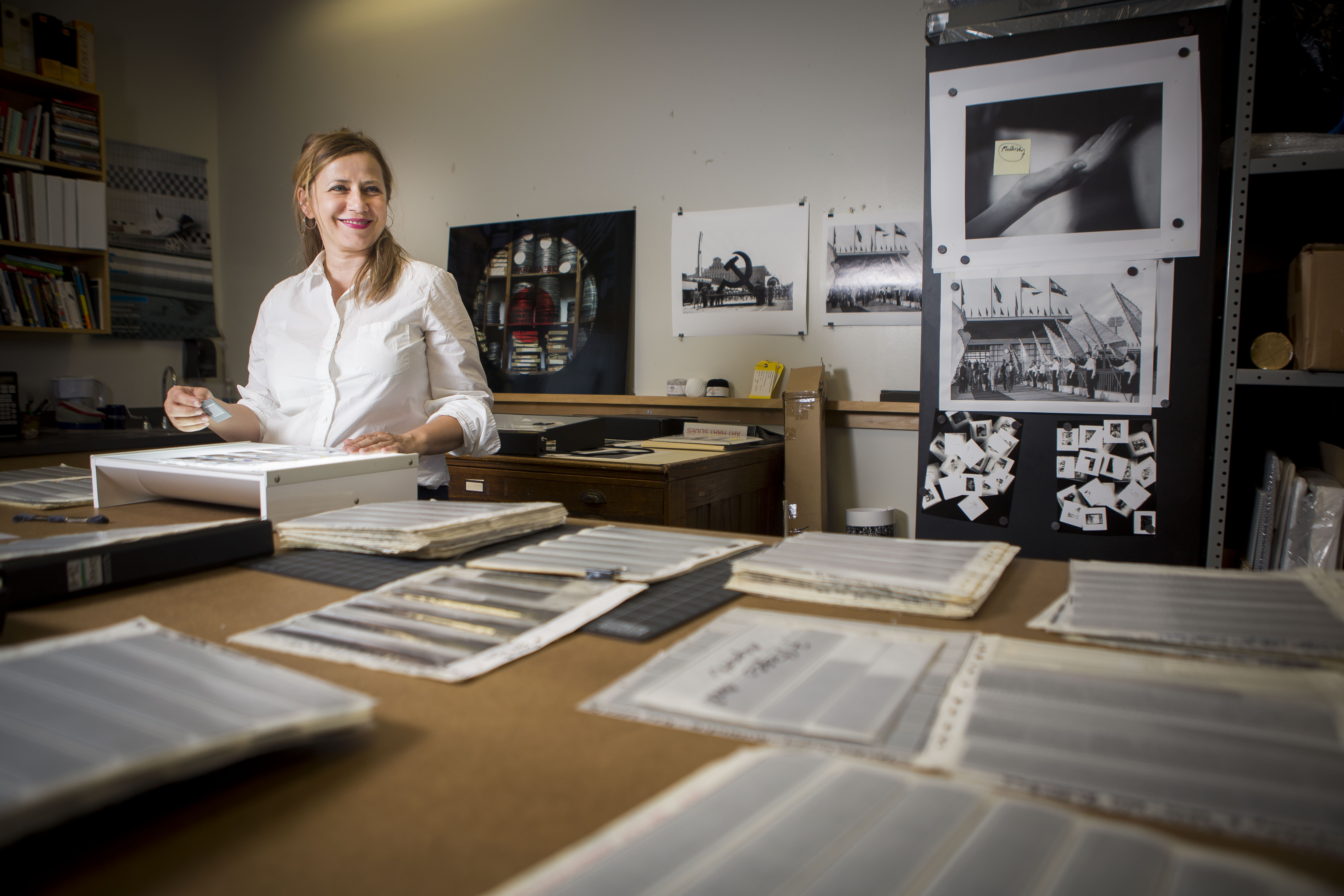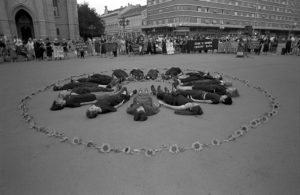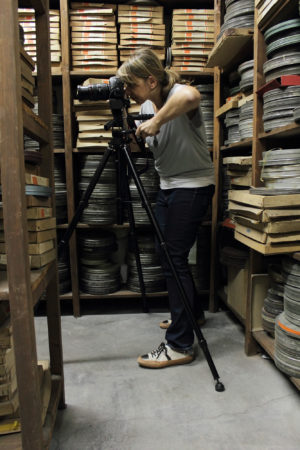Art Professor Vesna Pavlović Wins Smithsonian Artist Research Fellowship
Associate Professor of Art Vesna Pavlović has been awarded a Smithsonian Artist Research Fellowship to conduct research at the Archives of American Art (AAA) in summer 2021. The program provides support for outstanding visual artists from around the world, with the aim of inspiring new works of art. Fellows spend one to two months in residence at the Smithsonian Institution in Washington, D.C. to conduct their research.

Pavlović, who is also a 2018-2020 Chancellor Faculty Fellow, will focus on two AAA collections that are not ordinarily accessible to the general public: the Hildreth Meière papers, which cover the period from 1901-2011, and the Hal Linker Film and Video Collection, which covers the years 1955-1985. Hildreth Meière was an architectural muralist and world traveler at a time when such occupations were highly unusual for women. The AAA collection includes not only her sketches, but also a variety of slide and film materials, diaries, personal writings, and unpublished manuscripts. The Hal Linker collection is a record of one Southern California couple’s travels during the middle of the twentieth century. Husband and wife Hal and Halla toured extensively both domestically and abroad, including to the 1959 World’s Fair in Moscow.
“I chose these archives not only because of what they represent, but because my Smithsonian advisors’ work relies on memory and perception and cinema. When you have access to such an archive, it’s not only about what you imagine you would do, but it’s also about what happens during the process. I was once there, and it’s marvelous to think about having access,” Pavlović said.

Pavlović studied cinematography in Belgrade, in her native Yugoslavia (now Serbia), and began her career as a documentary filmmaker and photographer. Through her experience documenting political turmoil under the nation’s socialist regime in the 1990s, Pavlović became interested in visual representations of power and history. Her subsequent graduate studies at Columbia University expanded the anthropological elements of her work. After joining the Department of Art in Vanderbilt’s College of Arts and Science in 2009, she began exploring questions of how technology affects visual art, how art is staged in physical spaces, and visual depictions of memory. That work eventually led her back to Belgrade and to the Museum of Yugoslavia, where a 2018 Fulbright and her Chancellor Faculty Fellowship supported archival research on former Yugoslav President Josip Broz Tito and the creation of exhibitions titled Sites of Memory and Fabrics of Socialism.
“Vesna’s Smithsonian fellowship is a fitting honor for someone who engages with some of the most important questions of American culture,” said John Geer, Ginny and Conner Searcy Dean of the College Arts and Science. “Whether she’s examining political power and how it affects citizens’ lives, or how our memories affect our understanding of history, she brings forward important insights that capture attention and provoke consideration in the way only art can.”

Through her research at the Smithsonian, Pavlović plans to continue her investigations into how visual representation and perception have changed since the early twentieth century, as well as into the relationship between memory and photographic technology. She plans to pair her archival research with visits to Washington, D.C.-area murals painted by Meière and with a study of previous symposia on visual perception.
Pavlović is particularly looking forward to researching these issues in light of Meière’s position as a woman artist—how society saw her, how she saw herself, and the work she did to establish her legitimacy as a professional.
“Historically, women artists are often invisible, and a lot of institutions have been trying to remedy that. I hope to discover something in her practice that I can illuminate,” Pavlović said.
Though history is often focused on particular dates, for Pavlović, it’s more about specific experiences that often last for no more than a moment. She believes those moments, when depicted in photography and film, can encourage us to think about history in a more fluid way. She hopes that studying the contents of two historic archives will bring new insights on the nature of memory and a sense of history “not strictly guided by times and dates.” While Pavlović is not sure yet what kind of art will come from the experience, she is excited to work through the process and see the result.
“With my return to Belgrade [in 2018], I feel like I made a full circle with my work,” she said. “I feel like I’m ready for a new stage to begin.”
